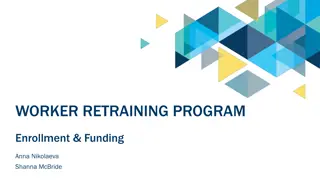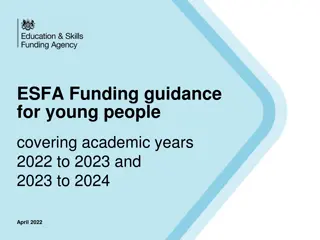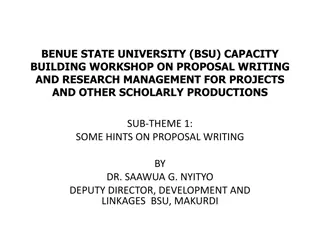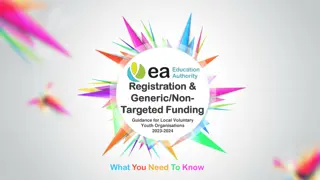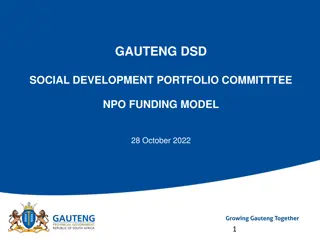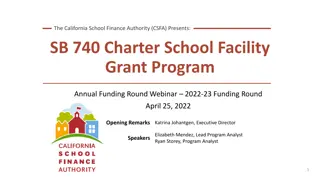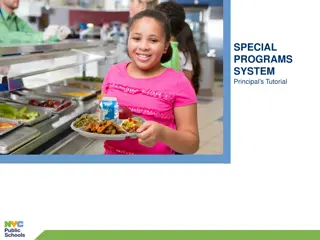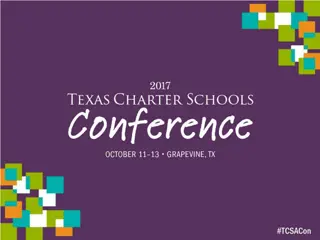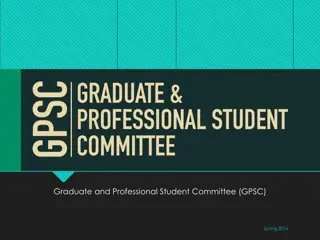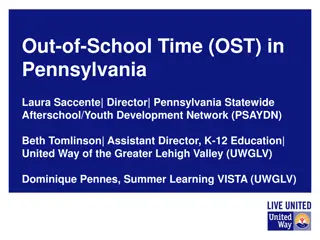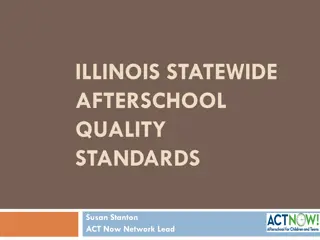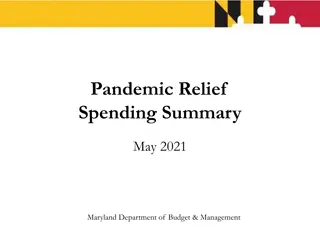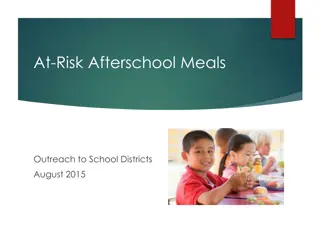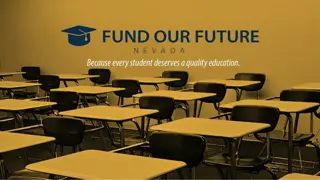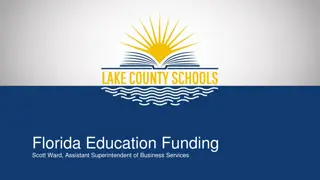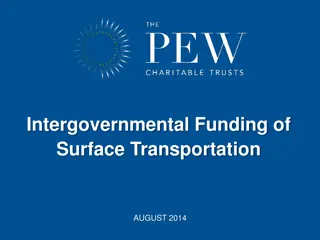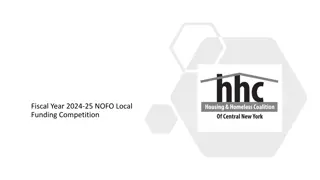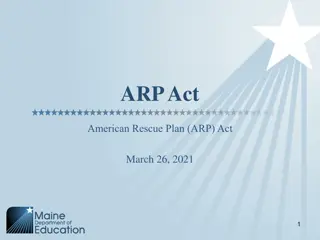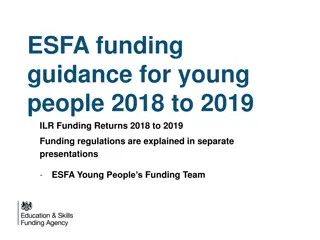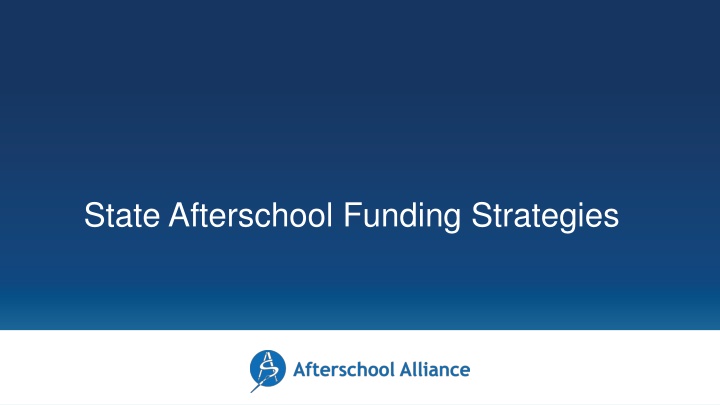
State-Level Afterschool Funding Strategies
Explore how afterschool programs are funded at the state level, including budget appropriations, lottery funds, cannabis revenue, and other tax revenue sources. Learn about specific programs in states like New York, Illinois, Massachusetts, Connecticut, California, Tennessee, and Nebraska that benefit from these funding strategies. Additionally, discover how federal funds such as TANF and CCDBG can support afterschool programming for school-age children.
Download Presentation

Please find below an Image/Link to download the presentation.
The content on the website is provided AS IS for your information and personal use only. It may not be sold, licensed, or shared on other websites without obtaining consent from the author. If you encounter any issues during the download, it is possible that the publisher has removed the file from their server.
You are allowed to download the files provided on this website for personal or commercial use, subject to the condition that they are used lawfully. All files are the property of their respective owners.
The content on the website is provided AS IS for your information and personal use only. It may not be sold, licensed, or shared on other websites without obtaining consent from the author.
E N D
Presentation Transcript
How is Afterschool Funded at the State Level? State Budget Appropriations Ballot Initiatives State Lottery Funds Funding Formula Cannabis and Other Revenue Additional Efforts Non 21st CCLC Federal Funds (TANF, CCDBG)
State Budget Appropriations Budget Line Items New York Advantage After School Program Empire State Afterschool Program Illinois Teen REACH Massachusetts ASOST and ASTOS-Q (quality enhancements) Connecticut After School Program Grant California After School Education and Safety (ASES) Program created through ballot initiative (Proposition 49) and funded through state budget appropriations
State Lottery Allocations Tennessee Lottery for Education: Afterschool Programs (LEAP) Created in 2002 to reserve unclaimed lottery funds for public and non-profit afterschool programs serving students aged 5-18 with priority for programs enrolling 80% high-need students. Nebraska Expanded Learning Opportunities Grants Funded by proceeds from the Nebraska Lottery.
Cannabis Revenue Alaska The Alaska Legislature passed Senate Bill 104 which directs cannabis tax revenue to drug prevention programs. 12.5% of cannabis excise tax revenue is dedicated to the Positive Youth Afterschool Grant program, which funds afterschool programs across the state. The first round of funding provided $1.25 million to programs Illinois The Cannabis Regulation and Tax Act (HB1438) became law on June 25, 2019, legalizing adult-use cannabis and creating the Restore, Reinvest, and Renew (R3) program. R3 funded 80 programs including youth development/afterschool programs in January 2021. Research Brief - Advancing Afterschool and Summer Opportunities Using Cannabis Tax Revenue
Other Tax Revenue Philadelphia Revenue from a sugary drink tax supports community schools, afterschool, and early care programs. Denver Approved a local sales tax for cannabis for city operations and an additional special sales tax.
Non 21st CCLC Federal Funds Temporary Assistance for Needy Families (TANF) and Child Care Development Block Grant (CCDBG) funds can be utilized by states to support school-age afterschool programming. States can also contribute matching state funds that can support youth programs. Georgia utilizes TANF funds to support afterschool programming. New York s Advantage After School Program was originally created through the appropriation of TANF funds. Utah uses Child Care Development and TANF funds to support elementary-age and older youth afterschool programs. Missouri utilized $3 million in TANF funds for afterschool and OST programs in 2019. Hawaii uses TANF funds to support the A+ and UPLINK program that support afterschool in the state.
Education Funding Formula Minnesota Community education formula for school districts includes youth after-school enrichment revenue. New Mexico HB 5, passed in 2019, provided additional per-pupil funds for districts to opt into providing extended learning programs, including adding additional days to the school year and provide afterschool programming. Oregon HB 3427, passed in 2019, funded a broad, formula-based initiative for schools, with activities ranging from increased instructional time to summer learning grants, with a total expenditure of $370 million.
Other State Efforts to Fund Afterschool Revenue from medicinal cannabis sales (OK) Proposed bill, not passed. Funding from public settlements Tobacco industry lawsuits, opioid settlements, and financial settlements (2008-09) Funding from public utility companies Red light camera fines (IL) Sports betting NY bill funds youth sports with sports betting revenues Digital Advertising Tax MD passed HB 732 in 2020 to institute a tax on digital advertising revenue, with funds supporting education.

